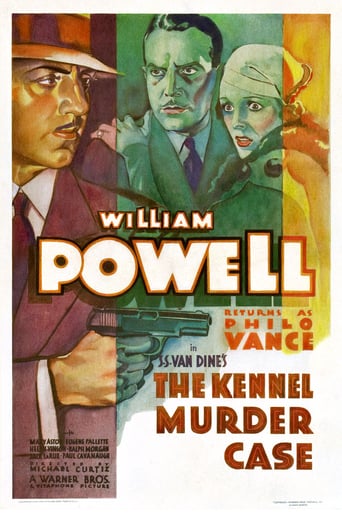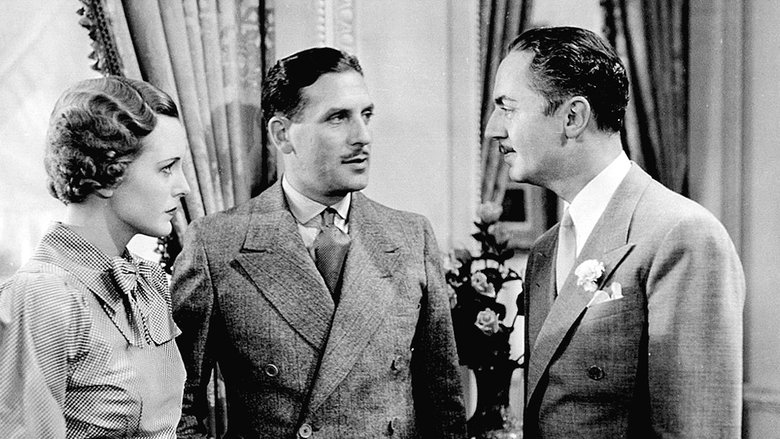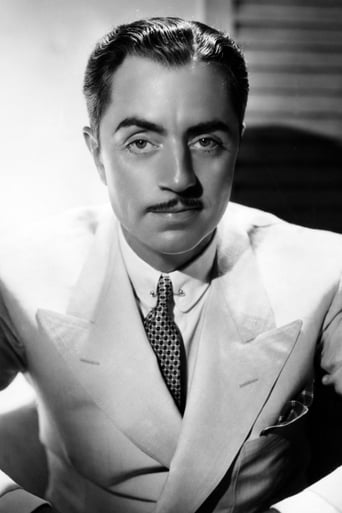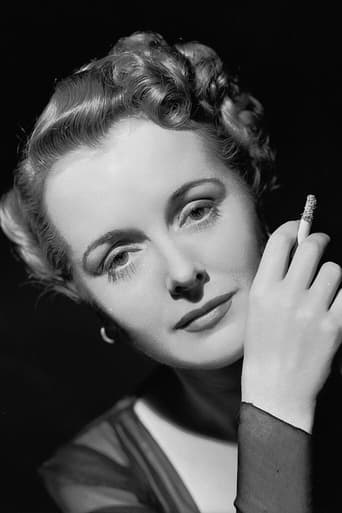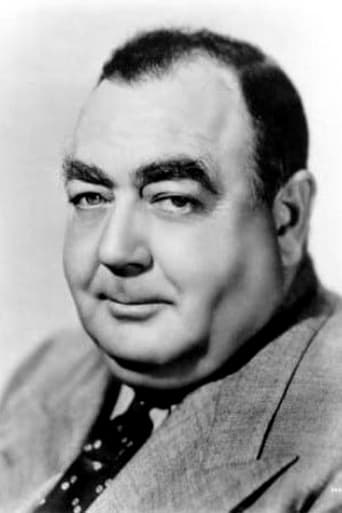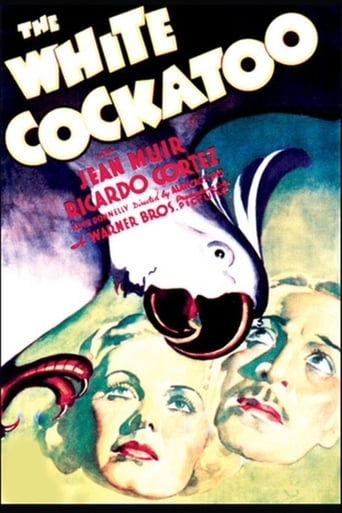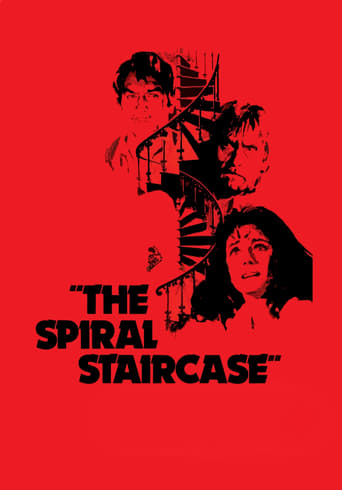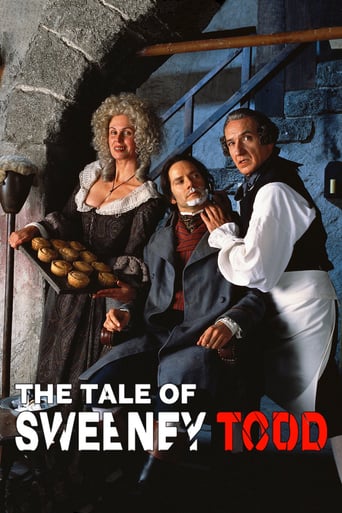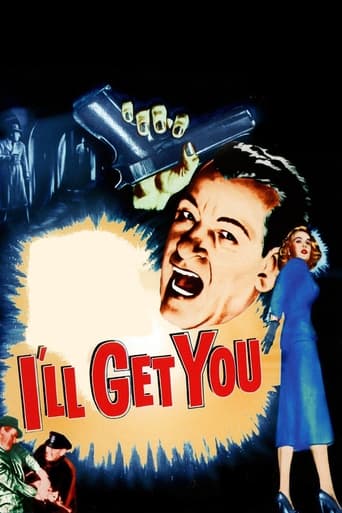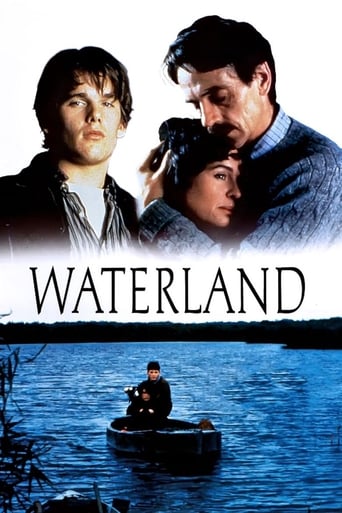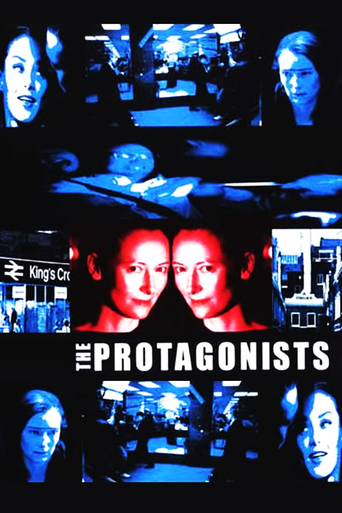The Kennel Murder Case (1933)
Philo Vance, accompanied by his prize-losing Scottish terrier, investigates the locked-room murder of a prominent and much-hated collector whose broken Chinese vase provides an important clue.
Watch Trailer
Cast
Similar titles
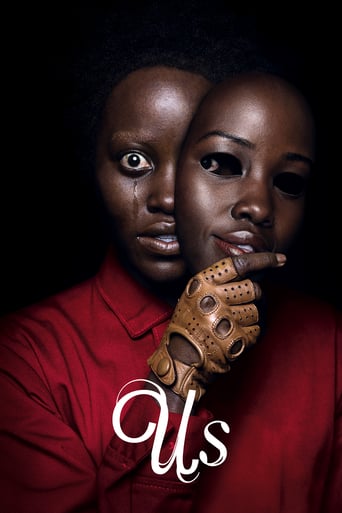
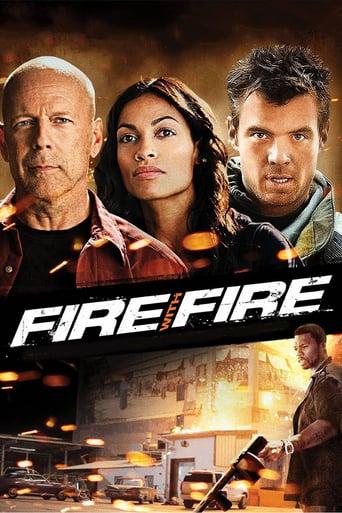
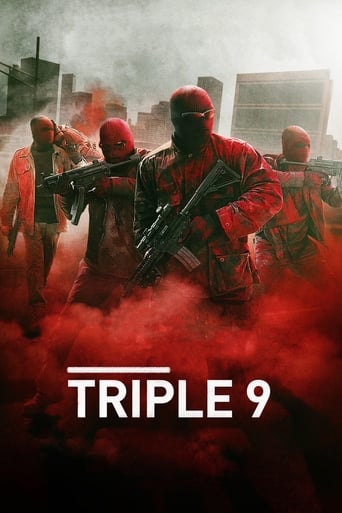
Reviews
That was an excellent one.
If you don't like this, we can't be friends.
Good concept, poorly executed.
The movie's neither hopeful in contrived ways, nor hopeless in different contrived ways. Somehow it manages to be wonderful
Suicide or Murder? When the much hated Archer Coe turns up dead and is believed to be a suicide, Philo Vance and Detective Heath steps into the scene to find out why a rich man would consider suicide as an option. Things become a bit stranger when Archer Coe's brother, Brisbane, turns up dead in a closet. Vance and Heath enlist the help of poor Dr. Doremus who never seems to get a chance to eat while this investigation is going on. It must be murder - but who and why?! A film I really enjoyed watching! It's a mystery film that is peppered quite a bit with comedy. Detective Heath is the funniest - and has an outstanding speaking voice! Dr. Doremus is very funny as well! Two of my favorite characters in the entire film.8.5/10
This is the sixth Philo Vance mystery film and the fifth and last starring William Powell, five films which he made between 1929 and 1933. (In 1930 a single Philo Vance film intervened which starred Basil Rathbone, THE BISHOP MURDER CASE, see my review). After this, Philo Vance was played by eight different actors until 1947, when the series ended (it had gone into abeyance during the War, between 1940 and 1947). Here William Powell continues to become more and more recognisable as the William Powell we all admire from his later films. Although the script gives him little opportunity, he still manages to make the occasional comment with the typical Powellesque mixture of nonchalance and challenge. Insouciance is never that far away, and one can sense it trembling on his lips. His sense of humour peeks through the workmanlike script from time to time, like a mouse glancing through its hole at a cheese on the table but not daring to try to approach it. (A whole cheese of the old-fashioned kind bears a certain resemblance to a director's cut, doesn't it? It is more nearly what its Maker intended.) This film has many characters, including seven murder suspects. The plot is convoluted, there is more than one murder, and there may even be more than one murderer. A central feature of the complex plot is that old chestnut, the murder in a locked room which is bolted from the inside. In this film, unlike others one could mention, we see a detailed and closeup view of just how that trick is done. I am not aware of when the famous motif of a murder in a sealed and bolted room first entered detective fiction, and doubtless experts in the genre might have some idea. But here we have it on screen in 1933, and trackers of ingenious plot twists can add that as one of the early dots which they join in their graph. But there are many red herrings and other complications in this tale. There may be not one, not two, but three murder weapons, for instance. Which one did the deed? Why are there so many? The sub-plot of a Chinese cook who is really a Columbia University graduate specializing in the acquiring of rare porcelain adds a further twist. Certainly this story was very meticulously plotted, with as many intersecting possibilities as a well-cut jewel has facets. It gleams from all angles, and the answers may come from more than a single one. Detective story lovers will not be disappointed. Mary Astor is one of the two female stars, but has little to do other than walk through her lines. This is a plot film, not a character film, and nothing matters but whodunit, or whodunn'em. There are no wisecracks or smart dialogue in this film, but it does have a running humorous sub-plot of the coroner whose meals keep being interrupted as he is repeatedly summoned to check on more bodies, and he gets grumpier and grumpier. He is very funny, and this lightens the film up a little. The film never rises above the mediocre except in its plot elements. Oh yes, there are cute dogs in this film. In most films, we get cute girls, but in this one we get cute dogs.
THE KENNEL MURDER CASE (Warner Brothers, 1933), directed by Michael Curtiz, returns William Powell to the screen playing detective Philo Vance. Having originated S.S. Van Dine's novel character in earlier Paramount capers as THE CANARY MURDER CASE (1929), THE GREENE MURDER CASE (1930), and THE BENSON MURDER CASE (1930), followed by Basil Rathbone's take on the character in MGM's THE BISHOP MURDER CASE (1930), it was natural having Powell back as the master sleuth once again as assisted by Eugene Palette as the police inspector from the Paramount entries. While those aforementioned titles along with the entire "Philo Vance" mysteries are as forgotten as the character himself, THE KENNEL MURDER CASE goes on record as the finest and most revived of them all.The story opens at a Long Island Kennel Club where Detective Philo Vance (William Powell) enters his Scottish terrier, Captain McTavish, in a dog show. Also in attendance is Archer Cole (Robert Barrat) observing glaringly at his mistress, Doris Delafield (Helen Vinson), accompanied by a much younger man, Eduardo Grassi (Jack LaRue). Cole's niece, Hilda Lake (Mary Astor), despises him because of his control over both her assets and personal life. Cole disapproves of Sir Thomas MacDonald (Paul Cavanaugh) whom Hilda intends to marry. While Vance's dog loses the contest, MacDonald's dog, Ghillie, is soon found dead in the alley. MacDonald places the blame on Cole and intends on avenging his dog's death. After having a heated argument with Doris and confrontation with her lover, Cole returns to his 980 East 71st Street residence. The next morning, Gamble (Arthur Hohl), Cole's butler, finding the door bolted, looks through the keyhole to find his employer dead. Before the steamer leaves port for Italy, Vance, on board, hears the news about Cole's death on the radio and immediately cancels his vacation to do some investigating. Because Cole's death is ruled a suicide by coroner, Doctor Doremus (Etienne Girardot), Vance believes otherwise and intends on proving it. Teaming up with Detective Ernest Heath (Eugene Palette) and District Attorney John F. Markham (Robert McWade) during the investigation, Vance encounters a total of seven suspects with motives for wanting Cole dead, ranging from his niece, her fiancé, Raymond Wrede (Ralph Morgan), Cole's personal secretary and live-in boarder in love with Hilda; Brisbane Cole (Frank Conroy), the victim's brother who owns a book of unsolved murders; and Liang (James Lee), Cole's Chinese cook. Things prove more complicated when Vance learns the sole witness to be a Doberman Pinscher.For Powell's fourth go round as Philo Vance, it also became his last. Powell would play other master detectives over the years, his best known and admired being that of Nick Charles in six installments of "The Thin Man" series for MGM (1934-1947). Based on his performance enacted here can only envision the way Powell's Philo was performed over at Paramount. In fact, Powell's Philo appears to be no different from his Nick Charles interpretation, with the exception that Nick is married. It really doesn't matter considering their similar techniques on crime solving and how he goes about revealing "who done it?" and why. Aside from its fine casting, director Curtiz keeps the pace moving through portions of split screen techniques, limited off-screen narration (by Vancve) and flashback details. Another definite asset is the familiar presence of Mary Astor, eight years before her substantial performance in the third screen adaptation of Dashell Hammett's detective mystery, THE MALTESE FALCON (Warners, 1941) starring Humphrey Bogart as private eye, Sam Spade. Being both classic "Philo Vance" and top-notch Powell, THE KENNEL MURDER CASE was unrecognizably remade by Warners as CALLING PHILO VANCE (1940) featuring James Stephenson in the title role; with Margot Stevenson (Hilda Lake); and Richard Kipling (Archer Cole). Shorter (65 minutes) from the original (73 minutes), the remake, with material brought up to date, is a very dull affair.Aside from broadcasts on commercial television, THE KENNEL MURDER CASE turned up quite regularly on public broadcast stations in the 1980s as part of its "Sprockets" series. As much as other "Philo Vance" mysteries featuring different actors distributed by other film companies through 1947, THE KENNEL MURDER CASE became the of many to be distributed to video cassette. Having fallen into public domain, many video prints are usually of poor quality. DVD copies are either found with a double bill with NANCY DREW, DETECTIVE (1938) on the flip side or as a solo disc. Better visuals and audio copies of THE KENNEL MURDER CASE can be seen on Turner Classic Movies. While a film like this may not win any blue ribbons, it should satisfy both humans and dogs alike. Sequel: THE DRAGON MURDER CASE (Warners, 1934) starring Warren William as Philo Vance supported by Eugene Palette, Robert McWade and Etienne Girardot resuming their initial roles. (***)
The first thing I liked about this mystery movie is that the early minutes of it are packed tightly with lots of storyline. And this is a somewhat complex story, particularly for a time (1933) when such movies tended to be rather light. Pay attention here or be lost! It's also nice to have a different setting...a kennel club (at least early on in the film)! Novel! Philo Vance (played wonderfully by William Powell) isn't as smooth and sophisticated as Nick Charles, and there's not the witty banter between man and wife you find in the Thin Man series, but this is a good character. And, you'll see lots of character actors you'll recognize (although probably not by name). Of particular note is the gravel-voiced Eugene Palette (and if you want to read an interesting bio, Google him). Also look for Ralph Morgan, lesser-known brother of actor Frank Morgan; you'll see the resemblance.I won't recount the plot. It's almost too complex to do so, but I'll just repeat that this is a sophisticated mystery for 1933! Recommended!
